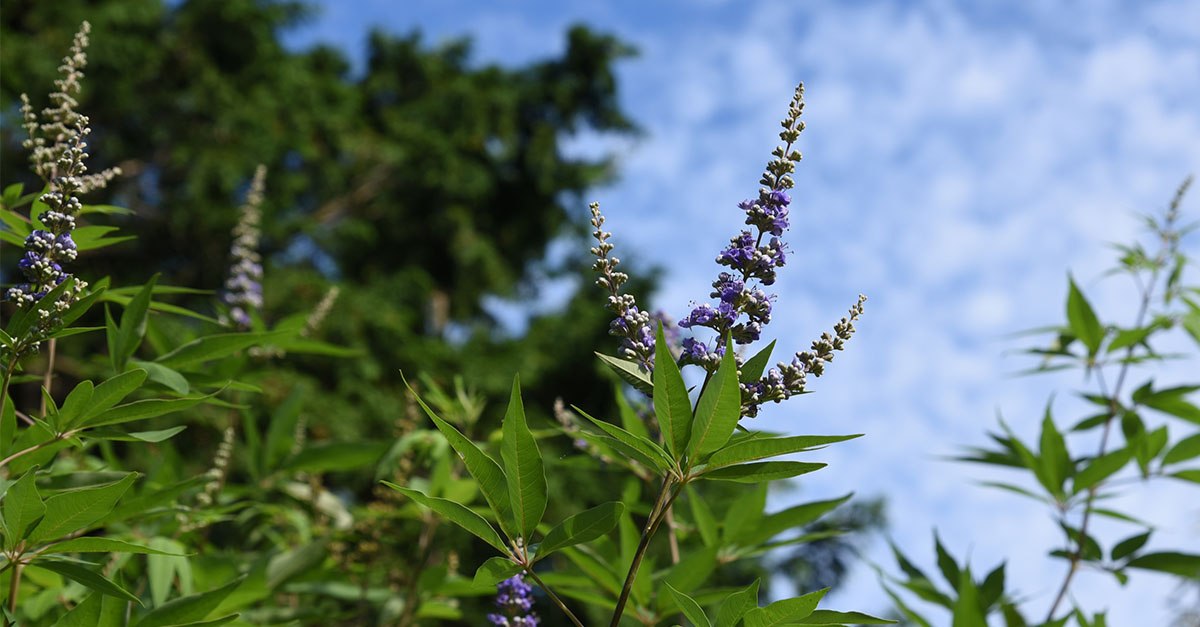Be a Georgia Tree Know-It-All: Chaste Tree
Each month, we feature some of the most popular trees in the state, including the White Ash, the Shagbark Hickory, and the Japanese Cryptomeria.
Today we will be discussing the perennial marvel known as the Chaste Tree (Vitex agnus-castus).
Characteristics
With large clusters of purple blooms surrounded by gray-green leaves, the Chaste Tree has sometimes been planted as an alternative to lavender in damper climates, though the soil must still be well-drained. Though lavender may have a more widely-familiar aroma, Chaste Trees have their own notable fragrance, too: one reminiscent of crushed sage. This means this lovely tree also makes for a multi-sensory experience.
Much larger than lavender, Chaste Tree sizes range from a width and height of three feet, up to as big as 20 feet tall and wide. So you can shape them to fit smaller landscaping areas, or nurture and grow them into a more stately presence as works best for your setting.
How did the Chaste Tree receive such a name? In the first century AD, Pliny the Elder noted in Naturalis Historia that women in Athens during the early Roman empire “kept branches of the tree under their beds during the feast of Ceres, the Roman goddess of agriculture, grain, and fertility,” believing it would help them remain pure.
Growing Conditions
The Chaste Tree is native to the Mediterranean, so it prefers dry and well-drained soils. It does relatively well in sandy or rocky soil, and can handle acidic or slightly alkaline soils, but you will want to avoid a planting area rich in organic matter, which may hold excess moisture around the roots.
Position your tree in an area where it can receive full sun for at least six hours a day. Chaste Trees can survive in some partial shade environments, but you will have the best blooming results when they have access to direct sunlight.
Tree Care
Chaste Trees are fairly hands-off when cultivated in their ideal environment. Once your tree is established, you will often find that the natural amount of rainfall your area receives will suffice when it comes to watering. But avoid planting it in any area which may flood or hold standing water. With the minimal water needed for maintaining a Chaste Tree, it’s a great option to add to Xeric gardens, where water is often conserved or restrained.
When it comes to pruning, the North Carolina Cooperative Extension advises: “Flowering will be more spectacular if the plant is heavily pruned after blooming.” Southern Living also recommends thorough winter pruning to keep it from messily overgrowing.
Signs of Distress
Overall, the Chaste Tree is a beautiful haven for pollinators, and fairly low maintenance. As for harmful insects and diseases, thrips and root rot from excess moisture are the two main things to look out for.
Keeping your Chaste Tree in well-drained soil is the most effective way to prevent root rot. You can also prevent leaf spot by carefully watering at the root of the tree on rare occasions when you may need to water.
Contact Us
Proper treatment of a Chaste Tree will allow it to bloom beautifully for years to come. For help with providing top-quality care, call Premier Tree Solutions at 404-252-6448. You can also visit our website to schedule an appointment.










